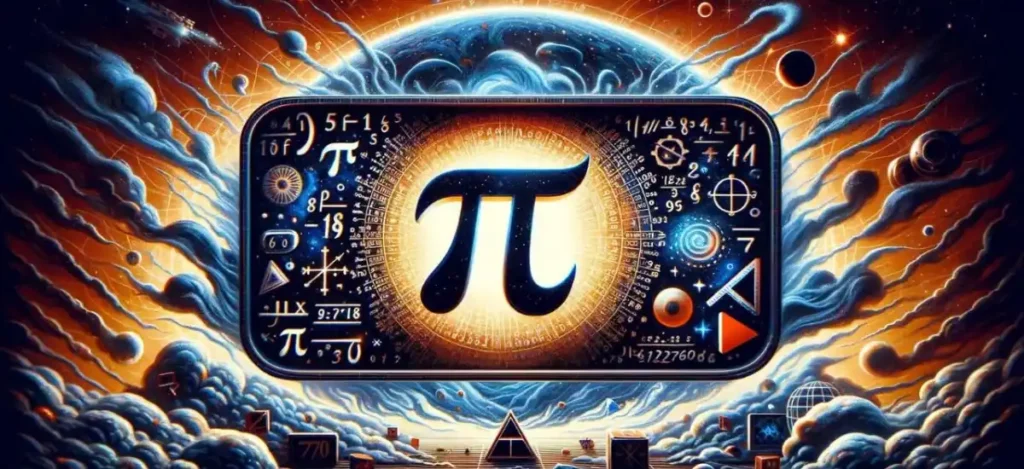Pi (π) is one of the most fascinating and important constants in mathematics. Representing the ratio of a circle’s circumference to its diameter, Pi has captured the imagination of mathematicians and enthusiasts alike for centuries. In this article, we’ll delve into the concept of Pi, explore the significance of the sequence 314159u, and uncover the various applications and cultural impacts of this remarkable number.
Historical Background Of Pi
Origin And Historical Development Of Pi
- Ancient Civilizations: The concept of Pi dates back to ancient civilizations like the Babylonians and Egyptians, who approximated Pi as 3.125 and 3.1605, respectively.
- Archimedes of Syracuse: In 250 BC, Archimedes provided a method to approximate Pi more accurately by inscribing and circumscribing polygons around a circle.
- Chinese Contributions: Mathematicians like Zu Chongzhi in the 5th century AD calculated Pi to seven decimal places, approximating it as 355/113.
Key Mathematicians And Cultures
- Liu Hui: A Chinese mathematician who improved upon Archimedes’ method in the 3rd century AD.
- Aryabhata: An Indian mathematician who approximated Pi as 3.1416 in the 5th century AD.
- Leonhard Euler: Introduced the symbol π in the 18th century, which has since become the standard notation.
Important Milestones
- 1706: William Jones first used the symbol π.
- 1768-1774: Johann Lambert proved that Pi is irrational.
- 1882: Ferdinand von Lindemann proved that Pi is transcendental.
Mathematical Properties of Pi

Definition and Basic Properties
- Ratio: Pi is the ratio of the circumference of a circle to its diameter.
- Approximation: Commonly approximated as 3.14159.
Infinite Nature
- Non-repeating Decimal: Pi is an infinite, non-repeating decimal.
- Irrational Number: This cannot be expressed as a simple fraction.
Formulas Involving Pi
- Circumference: C=2πrC = 2\pi rC=2πr
- Area: A=πr2A = \pi r^2A=πr2
- Volume of a Sphere: V=43πr3V = \frac{4}{3}\pi r^3V=34πr3
314159u: The Significance Explained

Explanation of 314159u
The sequence 314159u is significant because it represents the first six digits of Pi (3.14159) followed by the variable “u,” which could stand for any unit or variable in a mathematical context.
Mathematical Relevance
- Precision: Using 314159u ensures a high degree of precision in calculations involving Pi.
- Standard Representation: Often used in scientific and engineering contexts to represent a precise value of Pi.
Examples in Calculations
- Geometry: Calculating the circumference of a circle with a radius of 1 unit, C=2×3.14159=6.28318C = 2 \times 3.14159 = 6.28318C=2×3.14159=6.28318 units.
- Physics: In wave mechanics, using Pi to determine the frequency of oscillations.
Applications Of Pi In Various Fields

Geometry and Measurements
- Architecture: Designing circular structures.
- Engineering: Calculating stresses and strains in cylindrical objects.
Physics and Engineering
- Wave Mechanics: Pi is crucial in the study of waves and oscillations.
- Electromagnetism: Used in equations describing the behavior of electric and magnetic fields.
Computer Science and Cryptography
- Algorithms: Pi is used in various algorithms, especially those involving circles or spheres.
- Encryption: Some cryptographic algorithms use Pi to enhance security.
Pi In Everyday Life
Practical Uses
- Cooking: Calculating the area of a circular pizza or pie.
- Navigation: GPS technology relies on Pi for accurate positioning.
Interesting Facts and Trivia
- Pi Day: Celebrated on March 14th (3/14) around the world.
- Memorization Feats: Some enthusiasts memorize thousands of digits of Pi.
Cultural Significance
- Celebrations: Pi Day includes pie-eating contests and math activities.
- Media: Pi is often featured in movies and literature.
Advanced Theoretical Applications of Pi
In Advanced Mathematics
- Calculus: Pi appears in integrals and series.
- Complex Analysis: Used in the study of complex numbers and functions.
Statistical Distributions
- Normal Distribution: The bell curve is defined using Pi.
- Probability Theory: Pi appears in various probability formulas.
Beyond Mathematics: Pi in Art and Literature

Visual Arts
- Art Installations: Pi has inspired numerous art pieces and sculptures.
- Designs: Used in patterns and geometric designs.
Literature and Popular Culture
- Books: References to Pi in novels and educational books.
- Movies: Pi-themed plots and scenes in films like “Life of Pi.”
Creative Expressions
- Poetry: Pi has inspired poems and creative writing pieces.
- Music: Some compositions use Pi as a basis for rhythm and melody.
The Future Of Pi Research
Current Trends
- Digit Calculation: Technological advances have led to the calculation of trillions of digits of Pi.
- Theoretical Studies: Ongoing research into the properties and applications of Pi.
Technological Advancements
- Supercomputers: Used to calculate Pi to new record digits.
- Software Algorithms: Improvements in algorithms for faster and more accurate calculations.
Potential Discoveries
- Mathematical Proofs: New insights into the nature of Pi.
- Applications: Innovative uses of Pi in technology and science.
Frequently Asked Questions
- What is Pi (π)?
- Pi is the ratio of a circle’s circumference to its diameter, approximately equal to 3.14159.
- Why is Pi important?
- Pi is crucial in mathematics, physics, engineering, and many other fields for calculations involving circles and waves.
- What is 314159u?
- 314159u represents the first six digits of Pi followed by a variable unit, used for precision in calculations.
- How is Pi used in everyday life?
- Pi is used in cooking, navigation, engineering, and various everyday calculations involving circles.
- How many digits of Pi have been calculated?
- As of now, Pi has been calculated to be over 50 trillion digits using supercomputers.
- What is Pi Day?
- Pi Day is celebrated on March 14th (3/14) to honor the mathematical constant Pi.
- How is Pi represented in art and literature?
- Pi has inspired various artworks, sculptures, and poems, and has been referenced in books and movies.
Conclusion
Pi (π) is much more than just a number; it’s a fundamental constant that permeates various fields of science, technology, and art. From its historical roots to its modern-day applications, Pi continues to intrigue and inspire. The sequence 314159u encapsulates the precision and versatility of Pi, making it an essential element in numerous calculations and theories.
Related Posts:-

